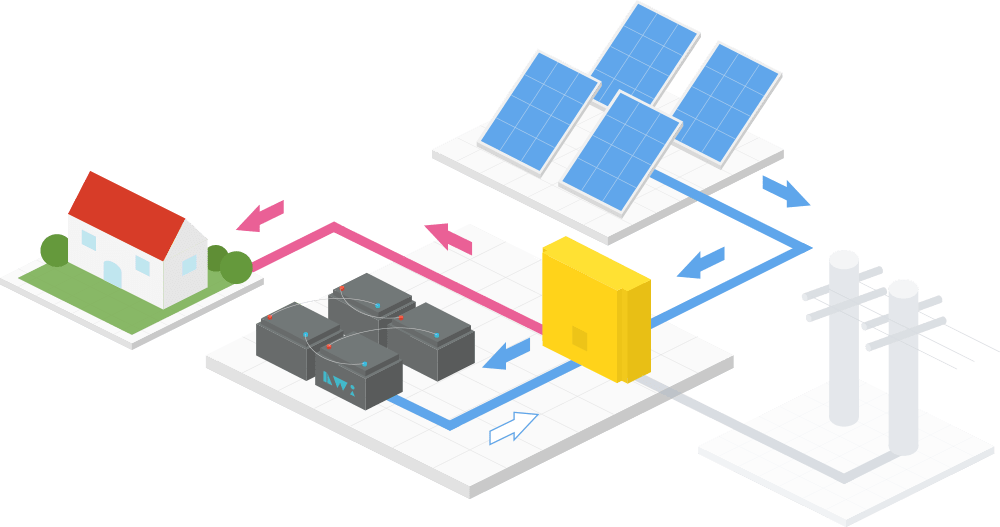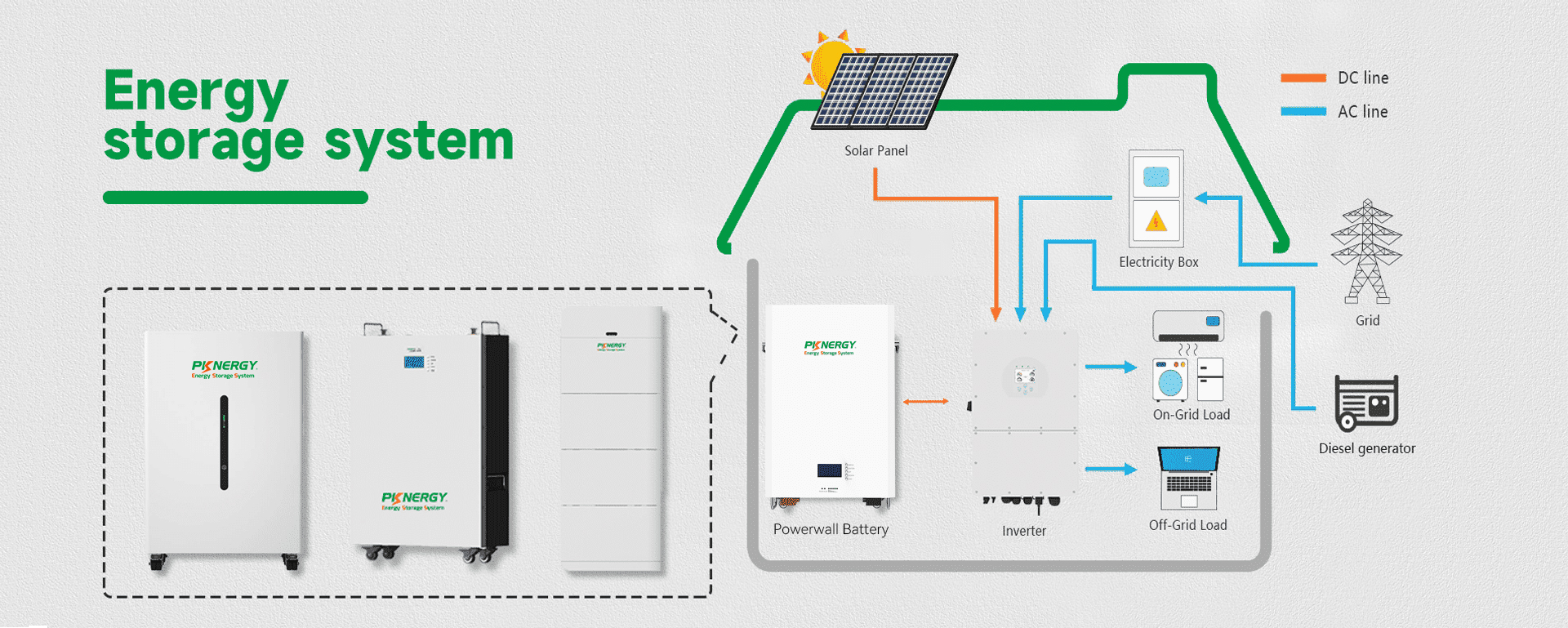what is battery bank for solar
A battery bank for solar refers to a device that uses a solar system to store electrical energy generated by photovoltaic reactions. It can store the electricity produced while the solar panels are operating or store energy from the grid (if your system is grid-tied). And can power your devices when the sun is out.
Benefits of using battery bank for solar
- Make it your own: When the system is equipped with a battery bank, it is equivalent to building an energy reservoir at home, ready for you to use at any time. The system can store solar power when it is not used temporarily and move the energy to when you need it. This improves your energy independence and resilience.
- Reduce dependence on the grid: In grid-connected systems, batteries can reduce dependence on the grid. Off-grid systems can also reduce reliance on engines.
- Backup Power: Acts as backup power in the event of a grid failure because your system is a 24-hour energy bank that is available when you need it.
- Optimize power usage: Stay away from annoying power bills and an uncontrolled grid that will keep you at the bottom of the electricity phase bill.
Types of battery bank for solar
Lead-acid batteries
Flooded Lead-Acid:
They are one of the most commonly used battery types and look like a box. Lead-acid batteries are like old trucks: reliable but slow. They require frequent care, such as checking and topping up water levels.
Their charging, slow due to less active materials, is akin to a lengthy journey. Affordable and time-tested, they’re dependable yet lack the efficiency of modern battery technology. About 70% to 85% of the electric energy is actually stored in the battery. I believe everyone who has used it will be impressed by this.
These batteries weigh as heavy as a rock and every time you use them it’s a workout. Their advantages are also obvious. First of all, they have mature technology and are relatively simple to use. Secondly, the price of lead-acid batteries is relatively low, and it is the most mentioned among the many battery banks for solar.
Sealed Lead-Acid:
SLA batteries are sealed, and battery parts include AGM and Gel batteries. This design reduces the possibility of acid leakage, making it more suitable for applications requiring high reliability. But the cost is higher than Flooded Lead-Acid and the battery life is not as good as lithium battery.
Lithium batteries:
This is a rising star in energy storage batteries. These batteries have a longer life and charge and discharge efficiency than lead-acid batteries. Clean Energy cars produced in recent years use these batteries, and they are also attractive in battery banks for solar. Attention. These chemical materials are used in all pknergy’s home energy storage battery series. We especially recommend customers to use them in home energy storage. Keeping the home in a safe environment at all times is not one of our goals in building a solar energy storage system?
NiCd and NiMH
NiCd batteries: These batteries only have 500~1000 cycle life and contain harmful substances. So these batteries are no longer popular, and most governments have strict regulations on their use.
NiMH batteries: These batteries only have 300~500 cycle life. They have their own advantages, they are very light, so they are usually used in small electronic devices. But it is not common in solar energy storage systems.
The Difference Between Off-Grid and On-Grid Solar Systems
Off-grid system: This means that your battery system is an island without any shipping routes. Its energy can only come from solar power or diesel generators. The advantage of this is that you can completely control it.

Grid-tied systems: Batteries are used to store additional solar energy for emergencies and can also be used to reduce grid power usage.
All in all, no matter which system you choose, you need to choose the best battery bank for solar, which will be the most important gas station on your way to using solar energy. Don’t know what battery capacity you need to buy? Get the best quality and cheapest batteries and the most competitive energy storage solutions at pknergy now!
Can I install batteries without solar panels?
Yes, battery banks can be installed separately and connected to the grid to store low-cost electricity from the grid. This is especially useful in areas where electricity prices vary day and night. But without solar panels, the battery pack doesn’t reap the direct benefits of solar energy and instead acts as a power storage and management system.
Are there incentives for solar cells?
There are many solar battery rebate and incentive programs available across the country.
The biggest incentive is a 30 percent federal tax credit to all 50 states. The tax credit is equal to 30% of the installation cost and reduces the federal income taxes you owe. Most solar battery installations will receive a federal tax credit of approximately $4,500!
In addition to tax credits, utilities and states are opening up more battery programs. Some are rebates that reduce the upfront cost of batteries, such as California’s SGIP program. Others are virtual power plant programs in which the utility pays you to use energy stored in your battery when demand on the grid is high.
Post time: Jan-07-2024

